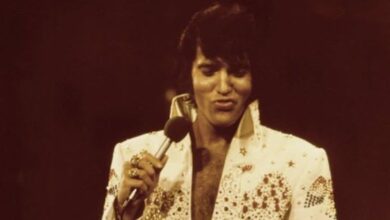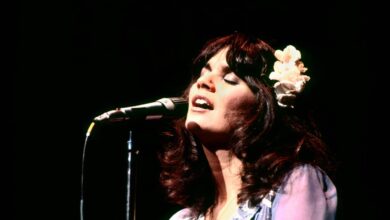Brenda Lee’s “Fool #1” Captures Heartache and Resonates as a Timeless Ballad of 1961
In 1961, Brenda Lee released “Fool #1,” a deeply emotional ballad that showcased her unparalleled ability to convey heartache through song. At a time when love songs dominated the airwaves, “Fool #1” stood out for its raw vulnerability and powerful vocal delivery. The song climbed to number three on the Billboard Hot 100 and reaffirmed Lee’s position as one of the most influential and versatile vocalists of the era.
Born in Atlanta, Georgia, Brenda Lee displayed remarkable talent from a young age. Her distinctive, full-bodied voice was a striking contrast to her petite frame, earning her the affectionate nickname “Little Miss Dynamite.” By the time she released “Fool #1,” she was already a seasoned performer with numerous hits, including “I’m Sorry” and “Sweet Nothin’s.” Lee’s ability to seamlessly shift between country, pop, and rockabilly allowed her to appeal to a broad audience, making her one of the most recognizable voices of her time.
The heartfelt lyrics of “Fool #1” were penned by Kathryn R. Fulton, whose words captured the devastating sting of unrequited love. The song’s narrator grapples with the pain of loving someone who no longer reciprocates those feelings, resigning herself to the role of a “fool.” This theme resonated with listeners, particularly in an era when themes of romantic longing and heartbreak dominated popular music. Lee’s interpretation of the song added an extra layer of sincerity, making it feel intensely personal.
The recording of “Fool #1” took place in Nashville under the guidance of producer Owen Bradley, one of the architects of the Nashville Sound. Bradley’s lush orchestral arrangements and gentle piano accompaniment complemented Lee’s emotive vocals, creating a soundscape that was both intimate and grand. His signature production style, characterized by rich string sections and warm reverb, allowed the song to maintain its emotional weight without overwhelming Lee’s voice.
When “Fool #1” was released, it was met with critical acclaim. Music critics praised Lee’s heartfelt performance, noting her ability to bring a sense of maturity and depth to the track. On the charts, the song’s success was undeniable, reaching number three on the Billboard Hot 100 and number 38 on the UK Singles Chart. Its commercial performance underscored Lee’s broad appeal, as both American and international audiences connected with its emotional narrative.
Beyond its chart success, “Fool #1” left a lasting cultural impact. The song’s exploration of heartbreak and emotional vulnerability struck a chord with listeners navigating their own romantic struggles. During a time when societal norms often encouraged emotional restraint, Lee’s willingness to express vulnerability resonated deeply. Her heartfelt delivery made the song feel like a personal confession, offering comfort and solidarity to those experiencing similar pain.
For Brenda Lee, the success of “Fool #1” further cemented her reputation as one of the most versatile and emotionally expressive singers of her generation. While she was already a prominent figure in both pop and country music, the song highlighted her ability to navigate the complexities of heartache with grace and authenticity. It also opened doors for more ballads in her repertoire, allowing her to explore themes of love and loss in future recordings.
The influence of “Fool #1” extended beyond Lee’s career. Its emotional resonance and masterful production set a standard for future ballads, inspiring countless artists to explore similar themes in their own work. The song’s blend of country and pop elements also contributed to the growing popularity of the Nashville Sound, which bridged the gap between traditional country music and mainstream pop.
Over the years, “Fool #1” has been covered by various artists, each offering their own interpretation of its poignant narrative. These renditions have helped to preserve the song’s legacy, introducing it to new audiences and ensuring its continued relevance. While each version brings a unique perspective, Brenda Lee’s original remains the definitive interpretation, revered for its emotional depth and sincerity.
Lee’s connection to the song has endured through the decades. Even as musical trends have shifted, her performance of “Fool #1” continues to captivate listeners. Its inclusion in numerous greatest hits compilations and classic playlists serves as a testament to its enduring appeal. For many fans, the song remains an essential part of Brenda Lee’s legacy, representing the emotional honesty and vocal brilliance that define her career.
Reflecting on “Fool #1” today, it’s clear that the song’s power lies in its ability to capture the universal experience of heartbreak. Lee’s raw, unguarded performance invites listeners to confront their own emotions, offering a sense of catharsis and understanding. It’s a song that transcends its era, proving that the ache of lost love is a feeling that knows no boundaries.
In the grand tapestry of American music, “Fool #1” stands as a shining example of Brenda Lee’s artistry. It’s a reminder of her remarkable ability to turn personal pain into a universally relatable experience. More than sixty years after its release, the song remains a touchstone for anyone who has ever loved and lost — a testament to the enduring power of honest, heartfelt music.



